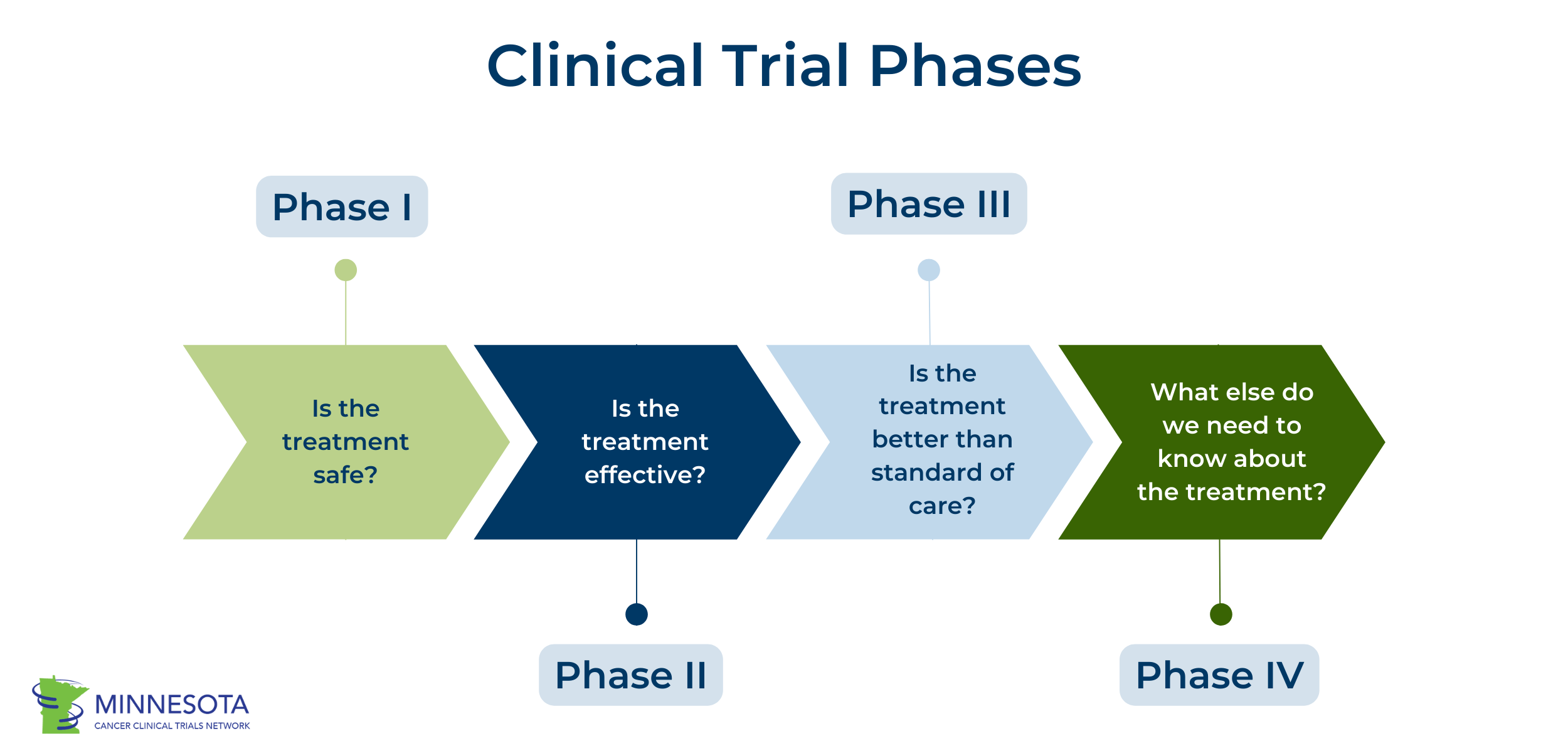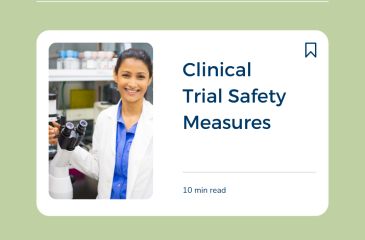All About Cancer Clinical Trials: Trial Safety Measures
Clinical trials are research studies that test new treatments for diseases, such as medications, procedures, and devices. There are also studies to learn about how to detect, screen for, and prevent diseases. When people are approached to participate in clinical trials, they may wonder if the trial is safe and if there are risks involved. While clinical trials may involve some risk, such as side effects or lack of benefit to the participant, there are protections to ensure that clinical trials are as safe as possible.
Phased Approach
Treatment trials must go through a structured, phased process before they are tested and made available to the public. Before a treatment can be given to people in a clinical trial researchers must have evidence that it could work and be safe for people. Treatments can be tested using animals or cell models. In cell models, cancer cells are grown in a lab in a dish or test tube. Then, a treatment is tested on these cells to see how they react. Next, the treatment may be given to animals to make sure it is likely the treatment would be safe in other living animals like humans.
If cell and animal models indicate that the treatment is promising, researchers must submit the treatment to the Food & Drug Administration (FDA) to get permission to move on to Phase I trials before the treatment can be tested on people. This process is called the investigational new drug (IND) application. If the IND is approved by the FDA, then the treatment can move on to the next phases. Treatments must be shown to be safe and effective in people before moving from one phase to the next.

Phase I trials test the treatment on a small number of people (20-50) and focus on learning about safety and side effects. Phase II trials test the treatment on an increased number of people (100+) and aim to determine how effective the treatment is. Phase III trials test the treatment on even more people (hundreds to thousands of people) and further study treatment effectiveness, safety, and side effects. Finally, Phase IV trials occur after a drug or treatment is approved by the FDA and made available to the public. Phase IV trials track a treatment’s safety, describe risks and benefits, and determine optimal use of the treatment.
Learn more about clinical trial phases in MNCCTN’s previous blog post!
Study Protocols
One of the first steps in developing a study is to write a protocol. A protocol is a structured document that outlines the plan of what will occur in the study from start to finish. Some components of a protocol include:
- The study purpose, goals, and motivations
- Who is eligible to participate in the trial
- How the study will be conducted
- How long the study will last
- What treatments and methods are involved
- What data will be collected and how
- How patient safety will be monitored
- How data will be analyzed
Institutional Review Board
Once a protocol is complete, it is reviewed by an Institutional Review Board (IRB). This is required for all studies involving human subjects. Most health care or academic institutions have their own IRB that reviews study protocols. If an institution doesn’t have an IRB, they can utilize an external IRB. The IRB is made up of experts, including scientists, doctors, patient advocates, and more who are dedicated to protecting the rights of participants. These individuals review study protocols to ensure trials are safe and ethical for participants and designed well. The IRB may approve, require modifications, or disapprove of a study protocol.
Data & Safety Monitoring
In addition to the IRB, many studies involve a Data & Safety Monitoring Board. This group may go by another name depending on the institution. This committee is made up of experts who may review the study and data to monitor patient safety, both before a trial is open and throughout the process. If the Data & Safety Monitoring Board believes patient safety is at risk, they will stop the trial. Data & Safety Monitoring Boards are required for Phase 3 studies and are often used for earlier phase trials as well.
Informed Consent
In addition to the study protocol, all studies have an informed consent document and process. Informed consent is the process of ensuring study participants are fully informed about the study before they enroll to participate. In this process, the study team will inform participants about the study protocol, the treatment or intervention involved, possible risks and side effects, and more. They will also go over the participant’s rights and emphasize that participating is voluntary and a participant may choose to withdraw from the study at any time. Participants can also ask any questions of the study team. After going over this information, the participant can choose to consent to participate or not. And even if they do consent to participate, they can and should still ask questions throughout the process!
Standard of Care & Ending a Trial Early
One safety concern that potential trial participants have is whether they will receive a placebo. A placebo is a medication with no benefit. In cancer clinical trials and many other trials for new treatments, placebos are not used. Instead, participants may be assigned to either receive standard of care (the treatment currently available) or the new treatment to see which is more effective. Your cancer will never be left untreated in a clinical trial.
Sometimes a trial will end early for patient safety. This can occur when a treatment is shown to be unsafe or not effective for participants, and it is not safe or unnecessary to continue. It can also occur when a new treatment is shown to be much more effective than standard of care. In this case, the trial is stopped early so others can access the new treatment as soon as possible.
Approvals & Reporting
In order for new treatments and medications to become widely available to the public, they must be approved by the FDA. In addition to approvals, many clinical trials are also required to report information, such as outcomes and results. This ensures that trials are accountable and transparent.
Learn More
In addition to all of these safety measures, there are laws and regulations that ensure safety for clinical trial participants. Learn more about clinical trial safety from the following organizations and resources:
